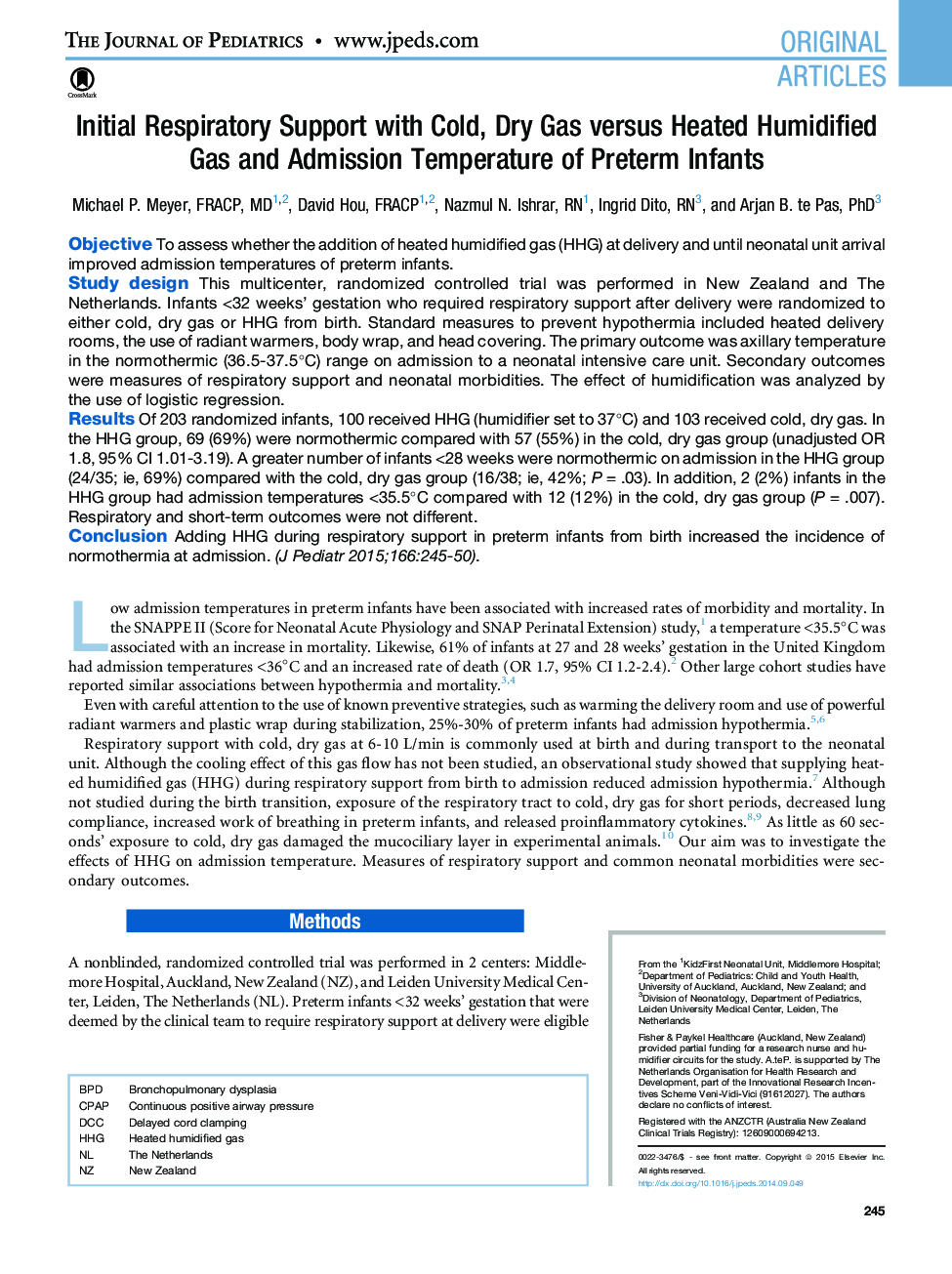| Article ID | Journal | Published Year | Pages | File Type |
|---|---|---|---|---|
| 6221650 | The Journal of Pediatrics | 2015 | 7 Pages |
ObjectiveTo assess whether the addition of heated humidified gas (HHG) at delivery and until neonatal unit arrival improved admission temperatures of preterm infants.Study designThis multicenter, randomized controlled trial was performed in New Zealand and The Netherlands. Infants <32 weeks' gestation who required respiratory support after delivery were randomized to either cold, dry gas or HHG from birth. Standard measures to prevent hypothermia included heated delivery rooms, the use of radiant warmers, body wrap, and head covering. The primary outcome was axillary temperature in the normothermic (36.5-37.5°C) range on admission to a neonatal intensive care unit. Secondary outcomes were measures of respiratory support and neonatal morbidities. The effect of humidification was analyzed by the use of logistic regression.ResultsOf 203 randomized infants, 100 received HHG (humidifier set to 37°C) and 103 received cold, dry gas. In the HHG group, 69 (69%) were normothermic compared with 57 (55%) in the cold, dry gas group (unadjusted OR 1.8, 95% CI 1.01-3.19). A greater number of infants <28 weeks were normothermic on admission in the HHG group (24/35; ie, 69%) compared with the cold, dry gas group (16/38; ie, 42%; P = .03). In addition, 2 (2%) infants in the HHG group had admission temperatures <35.5°C compared with 12 (12%) in the cold, dry gas group (P = .007). Respiratory and short-term outcomes were not different.ConclusionAdding HHG during respiratory support in preterm infants from birth increased the incidence of normothermia at admission.
